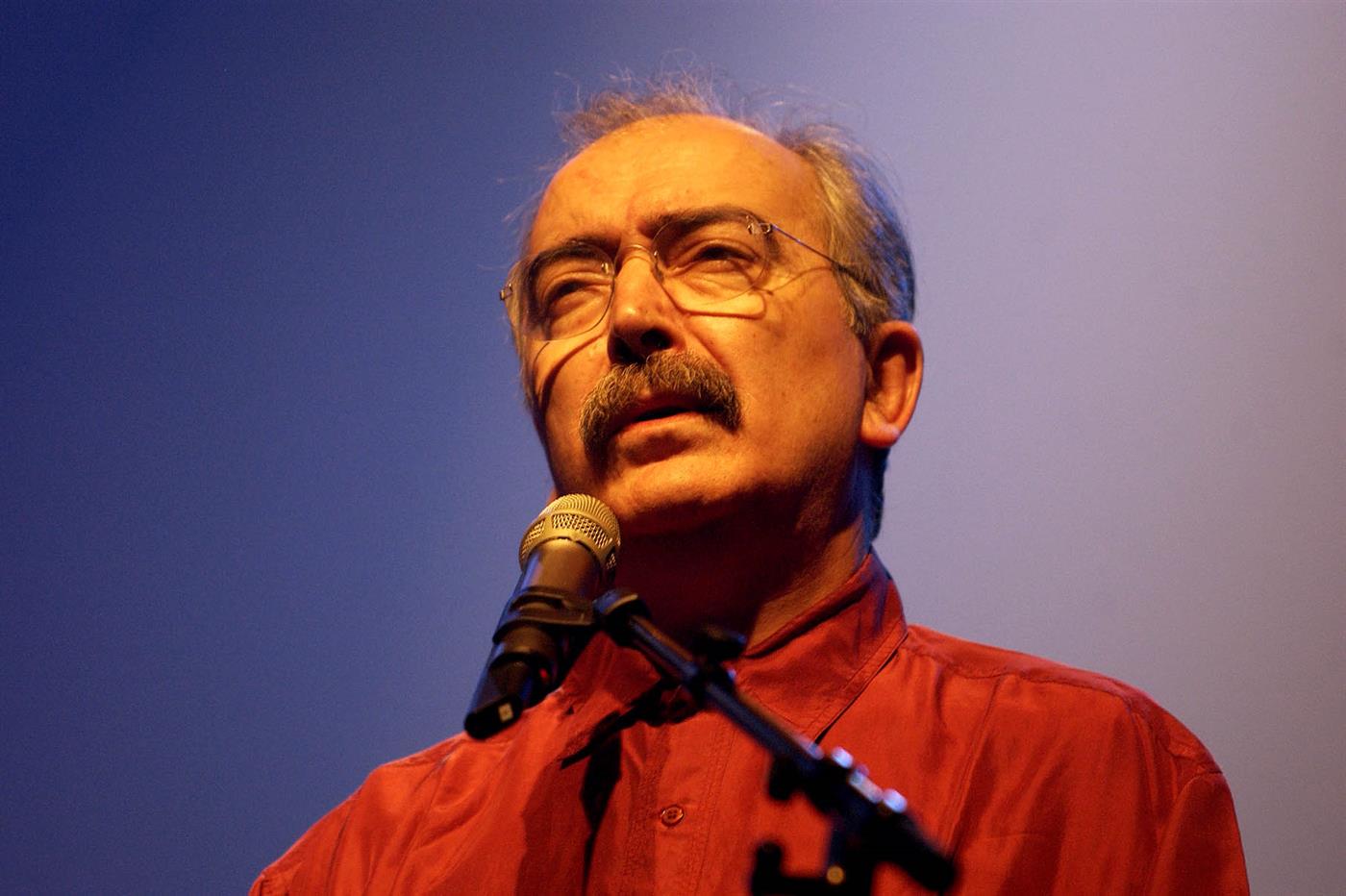Times change, wills change, announced José Mário Branco in his first album, released in 1971 in France, where he was in exile. This album, with poems by Natália Correia, Alexandre O’Neill, Luís de Camões and Sérgio Godinho, would be a milestone in the history of Portuguese music.
Born in Porto in May 1942, the son of primary school teachers, José Mário Branco is considered one of the most important and renewing Portuguese composers of the 20th century. He studied history at the universities of Coimbra and Porto, was a member of the Portuguese Communist Party, was persecuted by the PIDE and went into exile in France in 1963, at the age of 21, living intensely the events of 1968 there.
In that time of exile, he would later recall, he traveled the country to “entertain and give strength” to the workers who occupied schools, factories, neighborhoods and squares, with other Portuguese singers and French artists: “And it was there that I and other Portuguese artists started coming out of our exile shell, and we met many French and other artists. And from there some artistic affinities emerged”, recalled the musician in an interview with Lusa in 2017, citing, for example, the creation of the artistic cooperative Groupe Organon, with whom he arrived to record.
It was in France that he recorded, in 1967, his first EP, Seis Cantigas de Amigo. And it was in Paris that he met Sérgio Godinho: “And we immediately developed a friendship. We started to make partnerships and lyrics for what would become his first album, and my first album, which were recorded at about the same time” , recalled Sérgio Godinho, in statements to Agência Lusa. José Mário Branco edited Mudam-se tempo, Mudam-se os wills in 1971 and Sérgio Godinho released Os Sobreviventes in 1972. The two albums include partnerships between them and the same theme, O Charlatão, is part of the line-up.
They remained close and the last time they collaborated was on the album Nação Valente, by Sérgio Godinho, for which José Mário Branco wrote the theme Mariana Pais, 21 years old: “I have a very deep pain, suddenly this sudden death. . There was never a disagreement. Essentially, we were always close and accomplices. […] We are brothers in arms. Our lives have touched each other a lot and have touched each other in many creative and personal adventures”, stated Sérgio Godinho, stressing how Branco “had a fundamental importance in the renewal of Portuguese music”.
Always resist
José Mário Branco returned to Portugal after the revolution of 25 April 1974 and always thought, as he said on the album released in 1976, that A Cantiga is a Weapon.
That is why, as well as the “exceptional songwriter and exceptional orchestrator”, the writer José Jorge Letria, president of the Portuguese Society of Authors (SPA), recalls his mobilizing and intervening will: on the day he arrived in Portugal, coming from exile, he organized a meeting at his father’s house, with the presence of José Jorge Letria, Sérgio Godinho and Carlos Paredes and “made a political and cultural declaration explaining what singers needed to do at the time to continue the realization of freedom and democracy”. As Letria recalls, in statements this Tuesday to Agência Lusa, José Mário Branco immediately realized that it was important “to define the structure of the organization in which the singers would integrate to make their voices reach the Portuguese people”.
“Portugal has lost one of its greatest musical creators ever”, concludes the writer.
In this hot period, before and after the 25th of April, José Mário Branco worked a lot with José Afonso, for example, on the albums Cantigas do Maio (1971) and Vemm Mais Cinco (1973). Already at that time, he revealed himself to be the great producer:
“There is a funny story with Grândola, which is the result of a technical error of mine. Zeca arrived in Paris with that song, it had three quatrains, it was a song he dedicated to a group of Grândola… I knew the Alentejo as a kid. It was the Monda season, they would go there in the morning and when they returned at the end of the day the men and women would come hugging each other singing. Their step was: drag, land, drag, land. “O Zeca, let’s give this the form of the Alentejo song. You have to do the structure and I wanted to add the guys’ steps. Zeca liked the idea. There’s a picture of him learning what those steps look like. I asked the technician to run 30/40 meter cables, we set the beat on one of the tracks and recorded three or four minutes of steps as they did, around the four microphones. It was at four in the morning, so there would be no noise. But in the mix I wasn’t aware and it sounds twice as fast, they sound like soldiers. One day I asked Othello: “Why did you choose Grândola, man?” And he: “It’s a traditional song that would raise less suspicion of censorship and because it has those steps that are really a military march.” “
The musician was the founder of the GAC – Cultural Action Group, which between 1974 and 1977 performed more than 500 shows in Portugal and abroad. His activity extended to theater and cinema. He was part of the theater company A Comuna, founded the Teatro do Mundo, the Portuguese Union of Artists and Varieties. At Teatro da Comuna, for example, in 1978 he wrote the music for A Mãe and in the following year for Homem Morto, Homem Posto, both pieces by Brecht, staged by João Mota, which José Mário Branco performed alongside Carlos Paulo, Fernanda Neves, Manuela de Freitas, Melim Teixeira and others. In cinema, his collaboration with Paulo Rocha stands out, having composed the original music for O Rio do Ouro (1998) and A Raíz do Coração (2000) – in the former he also participated briefly as an actor.
The edition of Ser solidário, in 1982, includes the recording of FMI, one of the most famous compositions of José Mário Branco: a monologue with about twenty minutes recorded at Teatro Aberto in which, accompanied by acoustic guitar and flute, he recites and sings a text he composed “in a gust”, one night in February 1979.
“I fully assume all that, but luckily I’m not in the state I was in at the time, I’ve matured. I have the same radical and organic attitude, but it’s a more serene emotion”, said the author to the Lusa agency, remembering that he was living at home brother in Lisbon, when he composed the theme. “It had just been released from the Teatro da Comuna and there was still a reflux of PREC”, he said. About the performance, in 1982, he remembers having made some of the spectators cry. “People were very touched by that, they went through the same process as me when writing, which I start with an ironic tone and I get hardened and I get caught up in the text itself”. “I’m Zé Mário Branco, 37 years old, from Porto, much more alive than dead, count on me to sing and for the rest”, said the singer at the end of the interpretation of “FMI”.
In his discography we also find A Noite (1985), Correspondências (1990) and Canções Espanhadas (1999). The last album of originals, Resisting is winning, dates back to 2004. The title once again was a whole program. In the various interviews he gave about this launch, José Mário Branco claimed to be more radical in his ideas and, at the same time, more thoughtful, with his feet on the ground.
After that, José Mário Branco participated in the Três Cantos project, alongside Sérgio Godinho and Fausto Bordalo Dias, which resulted in a series of concerts, an album and a DVD.
A new look at fado
In addition to being a singer, author and songwriter, he was also a producer. Throughout his career, he collaborated with several musicians, including Sérgio Godinho, Luís Represas, Fausto Bordalo Dias, Janita Salomé, Amélia Muge and Carlos do Carmo. “I’ve always made few records because of this versatility. I really enjoy working for others. I don’t feel less interested because I’m not the one singing”, he said.
Speaking to RTP, this morning, the fado singer Camané, quite moved, described him as a “fantastic artist, of an incredible dimension, far beyond an intervention artist”. It was José Mário Branco who produced many of Camané’s records. But the first time, when the fado singer challenged him to produce an album of his own, in 1995, the musician was surprised: “I was at a loss because I had never been involved in fado, and I come from a generation that was against fado”, told in an interview with DN last year.
In fact, he started to like fado because of the influence of his wife, the poet Manuela de Freitas, then explained: “The first fado I did is from 1979 and was recorded in 1981. Already influenced by Manuela and with her finishing the lyrics for me , it’s Fado da Tristeza, Fado Penélope was from that time too. And I did something commissioned by Carlos do Carmo, called Raíz. That’s when I started to understand this world and learn something basic: fado is a typical music as in any type of music, there is good, bad and so-so. You have to know how to distinguish that.”
However, during the 1980s, he ended up moving away from fado, only truly enjoying it again when he worked with Camané: “I said to Camané: for us to work on this, it has to be with tweezers, it’s microsurgery. The first basic question is: everything depends on you. My job is to help you achieve this and make sure that everything around you does not harm it. Of course, questions of taste, aesthetics, musical interest, the phrase being more like this or more like this, musical writing. But one thing that already confused me at the time was the noise made by the musicians.”
“José Mário changed the way musicians accompany fadistas”, confirmed Kátia Guerreiro in the same interview. “Not letting the musicians overlap the voice, leaving space for the phrases to be sung and the guitar to effectively respond to the voice, without permanently making background noise. Traditional musicians who record freely were a little shocked…”
“What has to be in fado, as in any sung music, including operas, is a coitus between the word and the music”, he said. José Mário Branco himself would end up being surprised to be so fond of fado and to contribute to its renewal, from the 1990s onwards. “It was from Camané onwards. the state that the actor is in when he makes theater, which is the permanent risk of life, always risking everything. This creates something that Manuela and I call pathos, the strength that comes from the interpretation, it has nothing to do with the drama or comedy, has to do with ancient Greek tragedy: “What am I doing here? What is life? What is death?” Then innovations began to appear: now an accordion, now a violin… (…) But I did not change the timbre tradition of fado. having started to control the guitar notes, the viola chords, the viola’s way of playing.”
A work to be heard and revisited
In 2006, at the age of 64, José Mário Branco began a degree in Linguistics at the Faculty of Arts of the Classic University of Lisbon. He finished the 1st year with an average of 19.1, being considered the best student in his course. He downplayed the Merit Scholarship he was awarded, saying it is “a normal thing in an academic career”.
In 2008, in one of his rare performances on stage, he presented the show “Mudar de Vida” at Culturgest, in Lisbon. But in recent years, José Mário Branco resisted shows, because he felt “a bit museological on stage”, he didn’t want to give shows just to “sing the usual stuff with people lighting lighters and cell phones and shaking their helmets with songs that are twenty or thirty years old”. He mostly stayed behind the scenes as a songwriter and producer. But his work was still very much alive.
In 2016, the film Mudar de Vida, by Nelson Guerreiro and Pedro Fidalgo, dedicated to the life and work of the musician, premiered at Indie Lisboa.
José Mário Branco won two José Afonso awards, in 1992 and 1996, an award that distinguishes and recognizes what is done in Portugal in music. And he was honored, in 2017, at the Porto book fair, the same year he celebrated 50 years of career. To mark this moment, seven original albums and one live album were reissued, from a period between 1971 and 2004. The following year, he released a double album with unreleased and rarities, recorded between 1967 and 1999. of his 50-year career, he commented: “These aren’t things that motivate me much, I have respect for people’s respect, but these ephemeris stories…”
Also since last year, almost the entire archive of the musician has been available online on the website of the Center for Studies in Sociology and Musical Aesthetics (CESEM), at Universidade Nova de Lisboa. “It is a central archive to understand the universe of intervention music, the political, social and cultural relevance and also to enhance reinterpretations of the repertoire. It is memory that is at the service of reuse”, explained Manuel Pedro Ferreira at the time, scientific director of the project.
In May of this year, Um Disco para José Mário Branco was released, with 16 songs by the author revisited by various musicians, from Osso Vaidoso to Camané, including Batida or JP Simões. The idea came from radio broadcaster Rui Portulez who, he explained at the time, sees José Mário Branco as “a good example of inspiration and struggle” and wanted to record a work that he considers “timeless”.
As the musician Janita Salomé said this Tuesday, “José Mário Branco physically disappears but his work will remain – this is a common place, but it is necessary to say, it is fair to say it and fundamental, even for this sad event, which is the disappearance of Zé Mário, be a starting point, make Portuguese music reborn, because the work he left us is very vast and varied, and gives many suggestions for many works by many people who want to follow the work his”.
José Mario Branco died of a stroke on 19 November 2019 at the age of 77.











